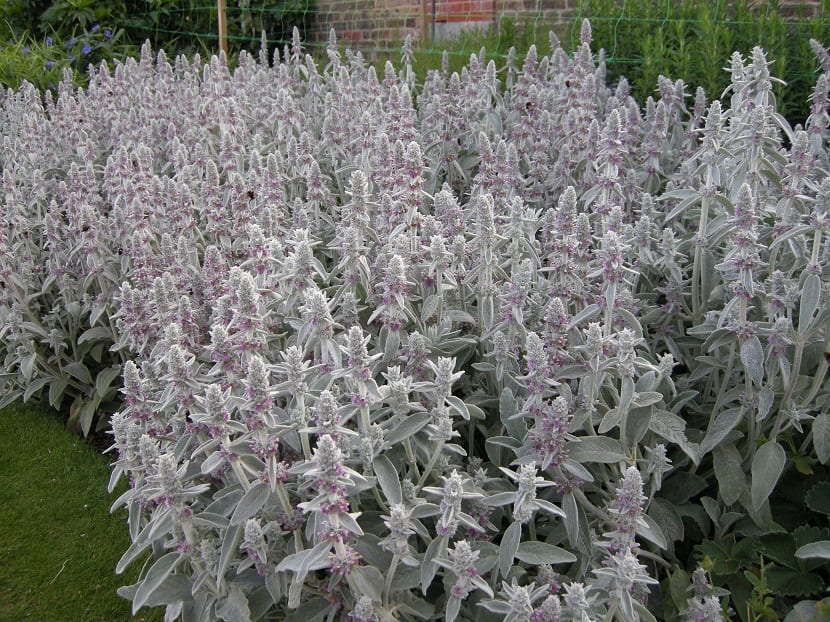
La Stachys byzantina it is a perennial plant that belongs to the family Lamiaceae. Due to the particular shape and texture of its leaves it is commonly known as rabbit's ear, lamb's ear or woolly and it is an ornamental species suitable for gardens.
From
Its scientific name has its origin in the Greek sound Stachys which means "ear of wheat" due to the appearance of the spikes of its flowers and the Byzantine qualifier refers to its origin as part of the Byzantine or Byzantine empire. In relation to its origin, it is a native plant of Turkey and Iran that spread throughout various regions of the Mediterranean and practically the entire Middle East.
Characteristics of Stachys byzantina
La Stachys byzantina It is an evergreen herbaceous plant that has a rhizomatous tuberous root system that includes various adventitious roots. With flowering stems, erect, little branched and approximately 20 centimeters long. With thick leaves and covered on both sides by a thick silvery-gray fluff. Its leaves are basal, elliptical oblong in appearance similar to rabbit ears, hence its common name with an approximate extension of 10 centimeters and entire margins.
During the winter the aerial zone tends to dry up and then reappear stronger and greener in spring. Its flowers are grouped in panicle inflorescencesThey are small, woolly, and usually have a purple-pink color. The seeds of this plant are contained in small capsules, these when fully mature fall to the ground to give way to new plants. Its flowering occurs from late spring to late summer.
Plantation
Although it is a plant that prefers sunny spaces, in desert areas it is more appropriate to place it under partial shade. It is a species that grows best in loose soilsslightly damp, with good drainage and a slightly acidic pH. It tolerates drought, although during dry periods its leaves turn brown and tend to fall to the ground, so it is recommended to remove them, a practice that will not damage it in any way. On the other hand, it does not tolerate frost or excessive humidity.
Although it is a plant that tolerates drought, you should apply watering regularly, particularly during the summer, always trying to avoid stagnation. In winter you must suspend watering. If you grow the plant in pots, water it frequently throughout the growing process. It is important not to water the upper part, because its leaves can rot if they receive excess water. For the same reason you must make sure that it is in a place where the air circulates freely.
Regarding fertilization, you can do it every 2 or 3 months using slow release granular fertilizers for this type of plant. Pruning should be done preferably in the month of November, pruning all the logs at ground level. This serves to protect the plant from the intense cold and favor the growth of new shoots.
La Stachys byzantina it spreads spontaneously through its seeds, but it can also be multiplied by dividing the groups. If you decide on propagation by seed, it is recommended that you sow in spring; while the group division procedure, you should carry it out during the fall.
Diseases and pests

Rabbit ear is prone to root rot caused by Due to the excess of humidity in the soil, it also tends to develop diseases caused by the same humidity. This species does not suffer from the attack of the annoying aphids, but it is affected by mold or white dust.
Uses
It is a plant that has medicinal propertiesFor this reason, it is used in case of insect bites, particularly bees. It is also used as an antibacterial bandage to treat wounds. Its leaves are used in the treatment to relieve colds, flu and asthma attacks.
Due to its characteristic soft foliage, it is used in the elaboration of sensory gardens for children, who caress them and perceive the different sensations that nature can offer. It is a plant for ornamental use, suitable for decorating public, private, rocky and even coastal gardens.
